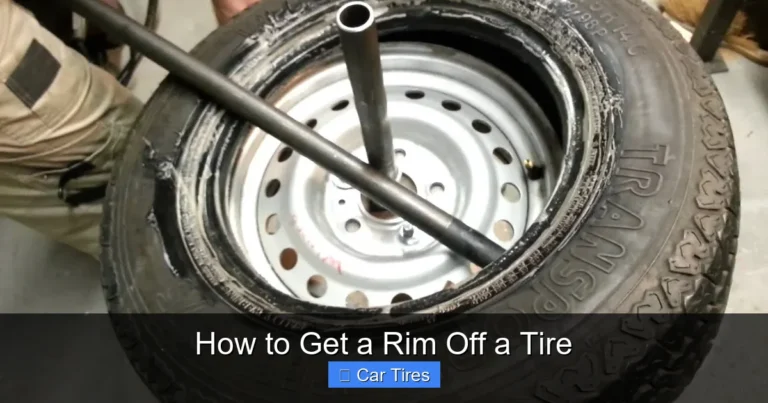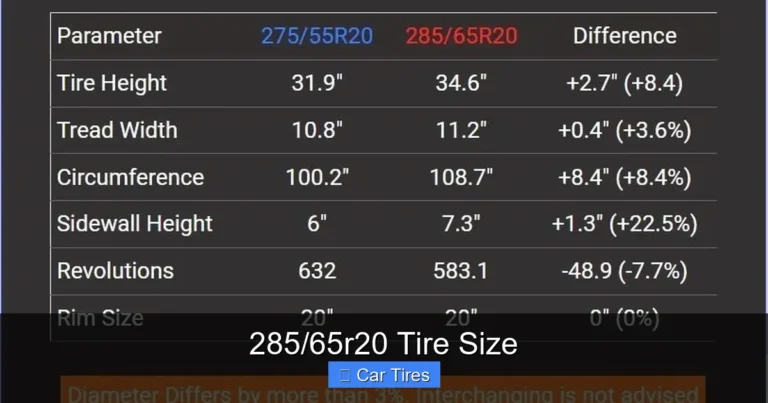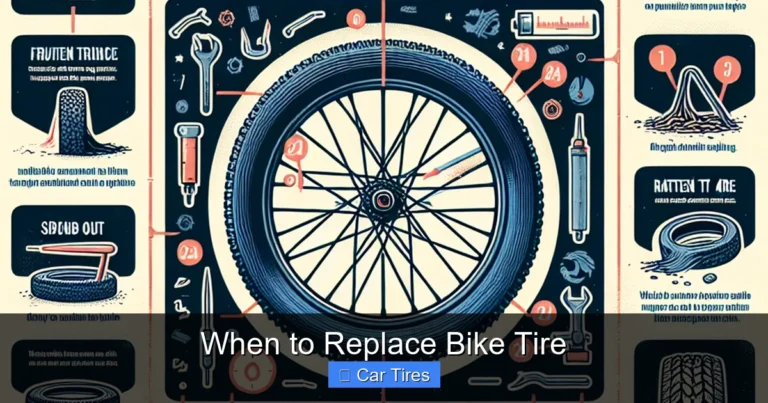How Long Does It Take to Repair a Tire with a Nail in It?

You’re driving along, music up, iced coffee in hand, cruising through your morning commute — and then it happens. A weird wobble. That dreaded thump-thump-thump. You park, step out, and there it is — a nail straight through your tire.
It’s the kind of surprise that can throw your entire day off balance.
We’ve all been there. That moment when you ask yourself: “How long does it take to repair a tire with a nail in it?” Will it be a quick fix? Can you make it to your meeting? Or are you stuck waiting hours at the shop?
In this article, we’ll walk you through everything you need to know. You’ll learn the average repair time, different scenarios, tips to speed things up, and when it’s better to replace instead of repair. Plus, we’ll sprinkle in some real-life advice and hard-learned lessons to help you avoid common mistakes.
In This Article
- 1 Nail in the Tire? First, Don’t Panic
- 2 How Long Does It Really Take to Repair a Tire with a Nail in It?
- 3 Plug vs Patch: What’s the Quickest Option?
- 4 Can You Drive on It First? Yes, But Be Careful
- 5 DIY Tire Plug Kits: Can You Save Time at Home?
- 6 Situations That Can Extend Repair Time
- 7 What If You’re Stuck in the Middle of Nowhere?
- 8 Bullet Points: Quick Takeaways for Busy Readers
- 9 Real Talk: Is It Worth Repairing or Replacing?
- 10 Can a Nail in Your Tire Be a Long-Term Fix?
- 11 What Does It Cost to Repair a Tire with a Nail in It?
- 12 Why Some Nails Don’t Cause Immediate Leaks
- 13 Frequently Asked Questions (FAQs)
- 13.1 1. Can I pull the nail out of my tire myself?
- 13.2 2. How long can I drive with a nail in my tire?
- 13.3 3. Will a nail in a tire cause a blowout?
- 13.4 4. How do I know if the nail went deep enough to cause damage?
- 13.5 5. Is plugging a tire better than patching?
- 13.6 6. Does tire sealant work on nails?
- 13.7 7. Do I need to rebalance the tire after a patch?
- 13.8 8. Can run-flat tires be repaired?
- 14 When Should You Replace Instead of Repair?
- 15 Tire Repair Time by Scenario (Table)
- 16 Story Time: The Day a Nail Ruined My Beach Trip
- 17 Final Thoughts: Don’t Underestimate the Power of a Nail
Nail in the Tire? First, Don’t Panic

When I had my first nail-in-the-tire situation, I was panicked. I imagined the worst — hundreds in costs, hours in the waiting room, missing appointments. But reality? It took about 30 minutes and cost me less than a dinner out.
Here’s what you need to do immediately:
-
Check the air pressure. If it’s leaking fast, you may need a tow.
-
Don’t pull the nail out yourself. That can make things worse.
-
Drive slowly if it’s still holding air. Head to the nearest repair shop or tire center.
The moment you notice the problem, the clock starts ticking — and your decisions matter.
How Long Does It Really Take to Repair a Tire with a Nail in It?
Here’s the short answer:
➡️ 15 to 45 minutes in most cases.
But that time depends on several key factors:
| Factor | Effect on Repair Time |
|---|---|
| Type of damage | Minor puncture = fast; sidewall = no-go |
| Shop workload | Busy shop = longer wait |
| Tools & tech | High-end shop = faster fix |
| Technician skill | Experienced = smoother process |
| Your response time | Faster you act = safer your tire |
Think of it like ordering coffee. A regular black drip? You’re in and out in 5. A custom oat milk, double-shot vanilla latte? That’s going to take time. Tires work the same way.
If the nail is in the tread and the hole is under ¼ inch, a plug or patch will do — quick and simple.
If it’s on the sidewall or the damage is too big, you’re looking at replacement, which takes longer.
Plug vs Patch: What’s the Quickest Option?
When the technician examines your tire, they’ll decide between:
-
Plug (inserted from the outside)
-
Patch (applied from the inside)
-
Plug-Patch combo (best of both worlds)
Plug repair is the quickest, taking about 15–20 minutes. It doesn’t even require removing the tire from the wheel in some cases.
Patch repair is more thorough. The tech removes the tire, cleans it inside, applies the patch, and rebalances it. This takes about 30–45 minutes.
Most reputable shops now use plug-patch combos, which are safer and last longer.
️ Pro tip: If you’re in a hurry and the damage is light, ask if a plug-only fix is safe. But never compromise on safety just to save time.
Can You Drive on It First? Yes, But Be Careful
This is the question I asked myself that morning: Can I still drive to the shop with the nail in?
If your tire isn’t flat and the air pressure is holding, yes, you can drive — but slowly and not for long.
Here are a few quick tips:
-
Keep it under 50 km/h (30 mph).
-
Avoid highways.
-
Get to a shop within a few kilometers.
Driving too far or too fast risks shredding the tire from the inside. That’s what happened to my cousin, who thought she could “just make it to work” — she ended up buying a brand-new tire instead of spending 20 bucks on a patch.
DIY Tire Plug Kits: Can You Save Time at Home?
Let’s be honest. We’ve all looked at that little $12 kit at the gas station and thought, “Can I just fix this myself?”
Short answer: Yes — but it’s not always smart.
A DIY tire plug kit can save you time. It takes about 10–20 minutes if you’re handy. But there are risks:
-
You might not seal it completely.
-
You could damage the tire if inserted wrong.
-
No internal inspection = hidden damage goes unchecked.
Use a plug kit only if:
-
The nail is in the tread.
-
The hole is small.
-
You can’t get to a shop soon.
Even then, consider it temporary — like putting a bandage on a deep cut. It’ll stop the bleeding, but you still need to see a doctor (or in this case, a mechanic).
Situations That Can Extend Repair Time
Sometimes, the answer to “how long does it take to repair a tire with a nail in it” isn’t so straightforward.
Here are common reasons it might take longer:
-
Shop is busy: Some tire centers have a 2-hour wait on weekends.
-
Hidden damage: The tech might discover sidewall issues or internal tearing.
-
Need to dismount tire: Patches require removing the wheel.
-
Balancing issues: After a patch, the tire may need rebalancing.
-
You need a new tire: If the hole is too close to the side or too large.
In those cases, it could take 1–2 hours, or even longer if parts aren’t in stock.
What If You’re Stuck in the Middle of Nowhere?
Getting a nail in your tire during a road trip is the stuff of bad vacation stories.
If you’re on a quiet highway or in a remote area:
-
Call roadside assistance.
-
Use a spare tire (donut) if you have one.
-
Try inflating the tire with a sealant like Fix-a-Flat.
Here’s a memory I won’t forget: I once got a flat while camping up in the hills. No cell signal. No spare. I had to walk two miles to a nearby farm to borrow a phone. Lesson learned: always check your spare before hitting the road.
Bullet Points: Quick Takeaways for Busy Readers
-
Average repair time: 15–45 minutes depending on method and workload
-
Quick plug: 15–20 minutes
-
Patch or combo repair: 30–45 minutes
-
Driving on it? Only if air pressure holds and you’re close to help
-
DIY kits work — but only temporarily
-
Hidden damage = longer fix time
-
Worst case? You may need a full tire replacement
Real Talk: Is It Worth Repairing or Replacing?
A big part of “how long does it take to repair a tire with a nail in it” depends on whether it can be repaired at all.
Let’s look at some quick comparison:
| Situation | Repair | Replace |
|---|---|---|
| Nail in tread | ✅ Yes | ❌ No |
| Nail in sidewall | ❌ No | ✅ Yes |
| Hole > ¼ inch | ❌ No | ✅ Yes |
| Tire is old/worn | ❌ No | ✅ Yes |
| Slow leak with no visible damage | ✅ Maybe | ❓ Needs inspection |
Can a Nail in Your Tire Be a Long-Term Fix?
So you’ve got your tire plugged or patched, and everything seems fine. But here’s the burning question: Is it safe to drive long-term on a repaired tire?
Yes — if done properly.
Most plug-patch combos are permanent fixes and will last the remaining life of the tire, as long as the repair was:
-
Done professionally
-
Located in the tread (not sidewall)
-
On a hole smaller than 6mm (¼ inch)
If your tire has been patched right, you won’t even notice the difference. I’ve driven over 15,000 km on a patched tire without issues. But I also got it inspected, balanced, and approved by a trusted tire tech.
However, if your tire was plugged only using a DIY kit — consider it temporary. These are great in a pinch but may fail over time, especially in rough weather or at high speeds.
What Does It Cost to Repair a Tire with a Nail in It?
Let’s be real — cost matters. No one wants to shell out more than necessary for a simple issue.
Here’s what you’re looking at:
| Type of Repair | Time | Cost Estimate |
|---|---|---|
| DIY Plug Kit | 15–20 min | $10–$20 |
| Shop Plug | 15–30 min | $15–$25 |
| Patch Repair | 30–45 min | $25–$40 |
| Plug-Patch Combo | 30–45 min | $30–$50 |
| New Tire | 1–2 hrs | $80–$250 (varies by brand) |
Pro Tip: Many tire centers offer free repairs if you bought the tire from them or purchased a road hazard warranty. Always ask.
Why Some Nails Don’t Cause Immediate Leaks
This might surprise you, but not every nail causes a flat tire.
Here’s why:
-
Position matters. If the nail goes in straight and seals the hole, it might not leak right away.
-
Tread depth plays a role. If the nail doesn’t go deep enough to puncture the inner layers, your tire stays inflated.
-
Temperature and tire pressure can keep things stable for a while — until they don’t.
I once drove with a nail in my tire for three days without knowing it — until it rained and the cold air caused pressure to drop. The tire deflated overnight, and I barely made it to work the next day.
So even if the tire holds air, don’t ignore it. Eventually, that tiny hole can become a dangerous blowout.
Frequently Asked Questions (FAQs)
1. Can I pull the nail out of my tire myself?
No. Unless you’re ready to fix the hole immediately, pulling the nail out will release the trapped air and potentially flatten your tire. Always let a professional inspect it first.
2. How long can I drive with a nail in my tire?
If the tire isn’t leaking, you can drive a few kilometers at low speed. But the longer you wait, the higher the risk. It’s best to get it repaired within 24 hours.
3. Will a nail in a tire cause a blowout?
Not instantly, but yes, if ignored. A puncture weakens the tire structure. One pothole or heat spike can lead to a sudden blowout.
4. How do I know if the nail went deep enough to cause damage?
Check your tire pressure regularly. If it drops over time, the nail has penetrated. A shop can do a soap bubble test to check for leaks.
5. Is plugging a tire better than patching?
Patching is usually more reliable than plugging. But the best method is a plug-patch combo, which seals the hole inside and out.
6. Does tire sealant work on nails?
Temporarily, yes. Aerosol sealants like Fix-a-Flat can stop leaks for short distances. But they’re messy, may unbalance the tire, and should never replace a proper repair.
7. Do I need to rebalance the tire after a patch?
Yes. After removing and reinstalling a tire, it should be rebalanced to avoid vibrations and uneven wear.
8. Can run-flat tires be repaired?
Sometimes. But many manufacturers don’t recommend it. Check your tire brand and model guidelines or talk to your mechanic.
When Should You Replace Instead of Repair?
Sometimes, fixing it isn’t the safest option. Here are times to replace:
-
Nail near or on the sidewall
-
Hole is bigger than ¼ inch
-
Multiple punctures too close together
-
Tire tread is worn (less than 2/32 inch)
-
You’ve already repaired it once in the same area
If you’re unsure, ask for a second opinion. It’s better to be safe than drive on a ticking time bomb.
Tire Repair Time by Scenario (Table)
| Scenario | Repair Time | Notes |
|---|---|---|
| Small nail, center tread | 15–30 min | Quick plug or patch |
| Nail near edge of tread | 30–45 min | Needs thorough inspection |
| Multiple punctures | 1 hour+ | May require replacement |
| Shop is busy | Up to 2 hours | Call ahead or schedule |
| Using mobile repair service | 30–60 min | Convenient, may cost more |
| Tire needs replacement | 1–2 hours | Tire selection & installation |
Story Time: The Day a Nail Ruined My Beach Trip
A quick personal moment — I was heading out for a weekend beach trip. Car packed, vibes high, sun shining. Just 15 minutes in, my dash lit up: “Low Tire Pressure.”
Pulled over. Yep, a big fat nail.
Thankfully, I was near a tire center. It took 25 minutes, a plug-patch combo, and I was back on the road with sandy toes by sundown.
The lesson? Stuff happens. But a nail in your tire doesn’t have to ruin your day — if you act fast and smart.
Final Thoughts: Don’t Underestimate the Power of a Nail
You’d be surprised how something as small as a nail can cause so much disruption. It’s sneaky — invisible until it suddenly becomes urgent.
But now, you know what to do. And more importantly, you understand the real answer to “how long does it take to repair a tire with a nail in it” — it’s usually under an hour, depending on the situation.
So next time it happens:
-
Stay calm.
-
Don’t yank the nail out.
-
Get to a repair shop.
-
And make the call: fix or replace.
Small actions can prevent big problems — just like a patch can stop a flat before it becomes a blowout.






